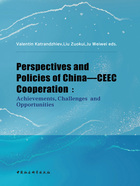
IV.Conclusion
The development of BMT highlights the new thinking of China’s cooperation with Europe, which is to develop not only relations with EU institutions and major countries, but also relations with regional and sub-regional small countries. This relationship model not only meets the needs of the development of bilateral relations, but also reflects the cooperation demands of the entire CEE region with China. Moreover, it uses a multilateral approach that is in line with the EU’s habits to strategize China’s relations with Europe, and reflects the pragmatism, flexibility, and innovation of Chinese diplomacy.
The innovation of theory requires relentless exploration, and the academe is striving to pursue a meta-theory, expecting their theories to be more explanatory. No matter which aspect we analyze, we must keep the essence of policy focus in mind, that is, where do we come from, where are we going, and what is the ultimate goal. Although theories should strive for universality, it should also emphasize the Chinese background and experience. Deviating from the background and experience of Chinese diplomacy, many perceptions are doomed to be subjective and lack practical foundations. It can be seen from the above analysis that the BMT fully embodies the essence of Chinese diplomacy. China needs to develop partnerships, make more friends, and achieve win-win and connectivity. The China-style multilateralism is more reflected in practice, draws nourishment from bilateral cooperation, promotes a whole-process, refined, and pragmatic multilateral cooperation approach, and further strengthens bilateral cooperation by cultivating multilateral platforms. The doubts and questions that the West may rise on the BMT can only be gradually discussed through exchanges, while insisting on seeking common ground, reserving differences, and promoting pragmatic cooperation.